- News
- Reviews
- Bikes
- Components
- Bar tape & grips
- Bottom brackets
- Brake & gear cables
- Brake & STI levers
- Brake pads & spares
- Brakes
- Cassettes & freewheels
- Chains
- Chainsets & chainrings
- Derailleurs - front
- Derailleurs - rear
- Forks
- Gear levers & shifters
- Groupsets
- Handlebars & extensions
- Headsets
- Hubs
- Inner tubes
- Pedals
- Quick releases & skewers
- Saddles
- Seatposts
- Stems
- Wheels
- Tyres
- Tubeless valves
- Accessories
- Accessories - misc
- Computer mounts
- Bags
- Bar ends
- Bike bags & cases
- Bottle cages
- Bottles
- Cameras
- Car racks
- Child seats
- Computers
- Glasses
- GPS units
- Helmets
- Lights - front
- Lights - rear
- Lights - sets
- Locks
- Mirrors
- Mudguards
- Racks
- Pumps & CO2 inflators
- Puncture kits
- Reflectives
- Smart watches
- Stands and racks
- Trailers
- Clothing
- Health, fitness and nutrition
- Tools and workshop
- Miscellaneous
- Buyers Guides
- Features
- Forum
- Recommends
- Podcast
feature
 2022 Velocio Alpha Merino Air jacket - collar inside.jpg
2022 Velocio Alpha Merino Air jacket - collar inside.jpgIs merino wool really the ultimate sustainable choice for cycling kit?
Merino wool is often marketed as the irrefutable sustainable choice fabric for cycling kit, with brands endlessly listing the natural performance benefits for outdoor exercise. Is it really as environmentally friendly as we're led to believe though?
Yes, there are an impressive amount of those natural performance benefits and it results in cycling gear you’re bound to enjoy wearing, but even merino isn't without its issues. While we'll acknowledge the wonderful qualities of this renewable resource, in this feature we'll also be looking at where merino is sourced, the ethical problems and the certifications you should be looking out for, why it’s often blended and the consequences, and how you should be looking after your merino gear to make the most of its sustainable value...
How is merino cycling kit sustainable?
In short, if a product is durable and has performance benefits, you're more likely to only buy once and use it lots. It’s important for us as consumers to put more effort into finding suitable products that we like and need, after assessing if we can use what we currently own.
Buy something that suits your needs, and do it once. It’s no good purchasing a product that is slightly better for the environment if you then fail to use it, and need to buy the more suitable item second time round.
It’s much more environmentally friendly to make a limited number of considered purchases. If it’s not a hasty purchasing decision and you’ve spent longer saving up for the premium performance item, then you’re also more likely to appreciate the garment and take good care of it.
Velocio is one cycling apparel brand that makes good use of merino in specific products, and it explains that its overarching aim is to create apparel that is both high performance and durable: “Our primary goal is to create apparel that improves experience and comfort and lasts a really long time.
“We recognise that the highest impact any apparel has is manufacturing, so these two goals mean that we can effectively reduce the impact of manufacturing by reducing the number of garments produced if we can make a product that people love to wear, and they can wear that product longer.”
There’s no doubt that merino wool garments boast a lot of performance benefits and so are likely to keep you satisfied. As detailed on Woolmark, here’s what it can offer:
Warmth: Merino wool contains crimps (natural waviness) which create pockets that trap air as you move. As that air can’t circulate it retains heat from your body to keep you warm.
This heat retention method which utilises the merino’s fine fibres provides a high warmth to weight ratio - you can stay warm with minimal bulk, and therefore it performs a useful role in a layering system for dealing with the cold or elements.
Merino wool also maintains its insulating properties when damp, meaning it has versatile use.
Soft and comfy: As merino wool fibres are fine and more flexible than standard wool fibres, they provide a gentler next-to-skin experience and, with this, can reduce itchiness issues.
Breathability: Wool is naturally highly breathable as it can absorb large quantities of moisture into its own fibres, holding it away from your skin before then moving it away to evaporate into the air.
Quick-drying: The fine fibres produce lighter fabrics that dry quicker. The fast-drying aspect is convenient for trips away and also is great for cutting down on the environmental impacts by reducing the need for high energy use for drying.
Odour resistant: Merino wool garments can be worn for longer between washing intervals because of the natural odour resistant properties of wool. This makes it a practical option for bikepacking trips as you can wear the same item of clothing without any social judging.
“It retains its benefits and often reduces other things needed on synthetics, like anti-bacterial treatments or coatings due to its natural and inherent properties,” Velocio adds.
Renewable and biodegradable
A sheep produces a new fleece each year, meaning that wool is a renewable fibre.
Merino wool is a natural fibre, and therefore 100% biodegradable. The ideal conditions are warm, damp soil combined with access to oxygen.
Researchers in New Zealand found in a study that merino fabrics lost around 36% of their mass after only two months burial in soil and up to an impressive 99% after nine months, whereas a polyester knitted fabric did not degrade at all during the course of the nine-month burial period.
Merino wool has also been found to readily biodegrade in a marine environment, whereas synthetic fibres do not.
The Woolmark Company is a not-for-profit organisation that works alongside Australia’s 60,000 woolgrowers to research, develop and certify Australian wool. It conducted a study into the biodegradability of untreated and machine washable merino wool in a marine environment compared to nylon, polyester and polypropylene.
To simulate a partial garment lifetime, all fabrics were washed repeatedly before testing. The rate of biodegradation was then compared to that of kraft paper pulp, a substance known to biodegrade readily.
Researchers found untreated wool biodegraded at 20.3% the rate of the pulp and the machine-washable wool biodegraded more than three times as quickly, at a rate of 67.3%. Nylon biodegraded at the slowest rate of just 0.8%, followed by polypropylene (1.8%) and polyester (6.3%).
Merino wool is therefore a good environmental choice during the use phase, as it won’t be polluting the ocean when being washed. Once it’s reached the end of its usable life, it can biodegrade fully when buried in soil.
Less energy intensive use phase
Two of the reasons for choosing merino wool are for its naturally odour-resistant and anti-bacterial qualities. Thanks to these qualities the social and hygienic reasons for washing frequently are significantly reduced; however, this benefit for the environment is only realised if you follow through and practice good washing and drying habits.
“Wool garments have particular attributes that favour reduced environmental impacts in the garment use phase, associated with odour resistance leading to less frequent need for washing, low washing temperature requirements and suitability for air drying practices,” it’s noted in Wiedemann, Stephen G. et al.’s study (2021).
Merino wool may have potential for a long life and low environmental impact in use, but the study concluded that there are “substantial differences between the best, current and worst case scenarios”. The use phase is well understood to be a hotspot for fossil energy demand and water consumption, but as the study acknowledges, with merino wool “opportunities exist for consumers to rapidly reduce these [environmental] impacts”.
Airing wool garments can help keep the clothing free of odours for longer, according to Laitala, K. et al.'s study (2017). By doing this you can maximise the number of times a wool garment is worn before it is washed.
As merino wool is quick-drying thanks to its fine fibres, it’s important to realise that there’s less need to attempt to quicken the drying process. Line drying or drying in an unheated room is the least energy intensive and so you should be using one of these methods where possible.
However, Laitala, K et al.'s study (2012) acknowledges that in practice it can be difficult to follow the ideal washing scenario because if you own few wool garments, it can take longer to accumulate a wool-specific laundry load, which may result in efficient washing loads.
With this in mind, Laitala, K. and Klepp, I.G.'s study (2016) recommends airing wool garments as it gives you more time to accumulate a fuller wool load. If this is not enough, making up the rest of a wool wash with garments made of other fibres is okay, as a wool wash cycle tends to be more gentle than other wash settings, and therefore won’t be detrimental to the other fibres.
Consumer washing and drying habits are a key part of making best use of the environmental benefits of merino wool, and while brands can do a lot more to instil these environmentally friendly practices by making it clearer on the product packaging, it’s down to you to wash less frequently and dry in an energy-saving way.
Can merino cycling kit be unsustainable? Mulesing, sourcing and more
Mulesing is method that's carried out to reduce the risk of losing sheep to a parasite called flystrike, but it is a painful procedure where skin is removed from around the backside of the sheep. This practice is the most important to be aware of, and to ensure you avoid if you're conscious about the welfare of the animal your garment came from.
Regular washing and shearing are much kinder methods of protecting the sheep, albeit much more expensive. Sheep that have been treated with the kinder methods produce non-mulesing merino wool.
“Where these [natural fibre] materials become problematic is more commonly associated with ethics,” Velocio acknowledges. “The treatment of these animals, how it’s processed, milled and so on.” The brand adds that down is another example of an amazing natural material in terms of performance, that has a sordid past.
“With anything - whether it’s sourcing raw materials, labour in manufacturing or end of garment life, it’s important that we consider how things are made and ensure that everyone and everything that’s involved through that process is part of that product.
“We are always working to ensure that our product meets the highest standards at every step - environmentally and ethically - and we work with all of our partners to continue to challenge this process and see where we can improve.”
Sheep mulesing has been illegal in New Zealand since 2018, but in Australia the practice is still legal.
Standards and certifications aim to address the environmental and social challenges related to wool production, and so it’s important to ensure the brands you are buying from are sourcing from certified farms and mills.
RWS stands for the Responsible Wool Standard, and alongside guaranteeing the absence of mulesing, this standard aims to ensure animal welfare through the application of Five Freedom points:
- Freedom from hunger or thirst
- Freedom from discomfort
- Freedom from pain, injury or disease
- Freedom to express normal behaviour
- Freedom from fear and distress
The Responsible Wool Standard’s social requirements are based on the principles of the International Labour Organisation’s Declaration on Fundamental Principles and Rights at Work, for guarantees that good working conditions are upheld.
Rapha, for example, has committed to only sourcing wool that is certified to the Responsible Wool Standard (RWS) by 2025. “Our commitment to using the finest, most responsibly sourced wool ensures the welfare of sheep – no mulesing – and land management practices that protect soil health, biodiversity and native species,” Rapha states on its website.
Where is merino wool sourced from?
For the cycling kit to be sustainable, 'virgin' (first time use) wool needs to be sourced from farms that are Responsible Wool Standard certified, which promote standards for animal welfare and land management. But where are these farms?
Merino wool is a natural fibre grown by merino sheep which were originally bred in Spain in the 12th century, and were later introduced to Australia in the 1700s.
“Nowadays 81% of merino wool is produced in Australia, which is the leading producer followed by New Zealand, South Africa, Uruguay, Argentina, etc,” Rapha highlights.
“There is a herd of Bowmont Merino sheep in the UK, though it tends to be relatively low volume, producing only 700kg of fibre each year - except for this kind of small scale solution, there are currently no merino wool producers in the UK or Europe.”
Rapha currently sources the majority of its wool from Australia, with a small portion from New Zealand, and does so due to its confidence in the Australian Wool Strategy 2030.
“Through technological innovation, environmental stewardship and building a young and prosperous community of farmers, the strategy is transforming Australian farming,” Rapha highlights.
“Progressive agritechnologies including virtual fencing and remote sensing are employed to help the young, skilled workforce, and farmers are also equipped with the apparatus needed to detect health issues like flystrike early on, so that sheep can be separated and treated without the need for mulesing.”
Relationships form part of Rapha’s sourcing practice. “Since the inception of our sportwool jerseys, which make up the majority of our merino supply chain, we have worked with the same mill who sources from Australia and New Zealand,” Rapha says.
“Wherever possible, we look to build upon our existing relationships with our long-standing partners, who are experts in their field.”
Although wool is environmentally friendly as a natural, renewable and biodegradable resource, it is sourced from far, far away from UK consumers, which does result in some unwanted environmental impacts. How it’s transported over can make quite a considerable difference in how much damage is cause, though.
Blending for increased durability and lengthened use phase
Merino wool is often blended with other fibres to increase the durability and elasticity of the clothing for improved comfort, fit and lifespan. In these cases, the performance benefits and increased use period are chosen over biodegradability and recyclability.
Alpkit uses the ‘corespun’ manufacturing method for its merino wool clothing to improve the durability and elasticity without losing any of the benefits.
“It's made by wrapping a central thread of nylon and elastane with Merino wool fibres to create a single yarn,” Alpkit explains. “Clothing made with corespun Merino lasts longer, stretches more and recovers its shape better.”
Velocio, for another example, has blended merino wool with nylon and elastane in its Concept Merino jersey.
It’s also the same case for Rapha’s Classic Jersey II. “For performance, our RPM fabric is 64% recycled polyester, 36% merino wool,” says Rapha.
But… “unfortunately, once you blend a natural fibre with a synthetic fibre it limits both biodegradability and recyclability,” Rapha continues.
“It’s one of the biggest challenges for the apparel industry, as so many fabrics are blends.
“For the cycling industry especially, we’re all going to struggle with recycling clothing with high amounts of elastane, such as bibshorts.
“This is something we’re exploring and looking to overcome, with our target of 50% of production volume being recyclable or compostable by 2027.”
Velocio explains its approach: “We look to how we can reduce the use of “new” materials wherever possible.
“That’s why we look to recycled polyester and nylon, bio-based synthetics and natural fibers, such as non-mulesing merino wool.
“It’s important to consider here the first point about performance, comfort and durability.
“The fact is, merino is superior for certain applications over synthetics, while in other situations, synthetics prevail.
“This goes for durability as well. So when we select a non-mulesing merino, we’re doing so because it performs exceptionally and for its sustainable qualities.”
There are certainly many considerations that need to be balanced. A lot of cycling brands utilise merino for its natural performance benefits, and accept that increasing the durability is a necessary step for reducing the environmental impact in one way by lengthening the use phase.
The journey of the merino product
So, we’ve gathered that merino is often blended to bolster its performance benefits, and we’ve also established that merino wool is often distantly sourced in Australia. This is because there simply aren’t closer options for cutting shipping emissions, which would of course be preferable for a reduced environmental impact.
With the added blending process, the distant farm from which the merino wool is sourced is only one step in its journey to the final product
We were very impressed by the comfort and breathability of Rapha’s Classic Jersey II, in both the men’s and women’s cuts, and so it certainly ticks the boxes of being a high quality product that’ll cover your needs. With this in mind, here are the steps taken from the raw material to final product, to understand how environmentally friendly the whole process is…
> You can read the full review of the men’s version here and the women’s fit here.
Rapha made the jersey with its Rapha Performance Merino 150 fabric (RPM150) which consists of 36% merino wool mixed with 64% recycled polyester. The polyester is often added to merino to help with stretch and strength of the fabric.
”The raw wool is sourced from an Australian farm, then sent to Italy to be spun into yarn, where it leaves with Responsible Wool Standard certification,” Rapha says.
“Meanwhile, the mechanically recycled polyester is sourced from post-consumer waste in Asia.
“The two come together in Poland, before being sent back to China where it’s cut and sewn into a finished jersey.”
Rapha clarifies that the RWS certification is up to fabric level, not just yarn, so it leaves the Poland mill with the certification.
“We’ve put in the work to trace each fibre back to the source, but it’s clear to see that the supply chain for materials is complex,” Rapha notes.
“Having this information to hand is the first step to making adjustments that will make things more efficient and ultimately minimise emissions.”
So, is merino cycling kit really sustainable?
It’s a complicated process to produce a top-performing merino product - so there’s certainly a lot more to consider when using merino wool than just its natural performance benefits.
While merino does boast a lot of amazing natural performance benefits - it’s warm, comfy, breathable, quick-drying and odour resistant - it could also do with a little bit of extra stretch and strength, particularly to meet the demands of cycling.
Brands often blend merino with other fibres such as nylon and elastane to increase the durability and elasticity of the clothing for improved comfort, fit and lifespan which will help lengthen the use phase, but this does limit biodegradability and recyclability, as well as increasing the steps in its journey across the world, from raw materials to the final product.
Cycling kit that is ethically produced - made from non-mulesing merino wool and meeting certifications such as RSW - begins its journey as far away as Australia or New Zealand.
But merino wool is a good environmental choice during the use and end-of-life phase. Thanks to its naturally odour-resistant and anti-bacterial qualities the social and hygienic reasons for washing frequently are significantly reduced, and it’s quick-drying too so it’s possible to dry in an energy-saving way. That said, it’s down to you to follow through with these good practices.
Merino wool also won’t be polluting the ocean when being washed and once you’ve finished using it, it can biodegrade fully when buried in soil.
Knowing what you know now about merino manufacturing, will you be buying merino cycling kit in future?
Anna has been hooked on bikes ever since her youthful beginnings at Hillingdon Cycle Circuit. As an avid road and track racer, she reached the heady heights of a ProCyclingStats profile before leaving for university. Having now completed an MA in Multimedia Journalism, she’s hoping to add some (more successful) results. Although her greatest wish is for the broader acceptance of wearing funky cycling socks over the top of leg warmers.
Latest Comments
- Rendel Harris 6 min 4 sec ago
That was the whole trick you see, U-boat captains would ask the lookout if there was anything to report and they would reply no, just a couple of...
- SimoninSpalding 8 min 8 sec ago
I came to say the same thing. Unfortunately even with 50 more bikes to come it seems unlikely that I will get together the required money in the...
- mdavidford 8 min 13 sec ago
Except that there are a lot less of those than there are SUVs. And they're generally closer to 'enough vehicle for the purpose', as opposed to the...
- richliv 33 min 23 sec ago
I'm far from being a luddite about new tech but what's the advantage of these over a mini pump which is about as light, occupies the same space in...
- eburtthebike 1 hour 5 min ago
That's one way of looking at it, but not particularly charitable. She's ill and needs treatment, not punishment.
- mdavidford 1 hour 8 min ago
Presumably the car spent the 18 months recovering from its first attempt.
- hawkinspeter 1 hour 39 min ago
Another vote for Bont, here. I bought a new pair of wide-fitting Bont Riot G MTB shoes this year and they're perfect.
- David9694 2 hours 41 min ago
Driver Who Broke Runner's Spine in Three Places Praised for Waiting Around Until Help Arrived
- Steve K 3 hours 18 min ago
Even if this gets to 100,000 signatures, I suspect the Petitions Committee will simply say there has already been a debate, so no need for another...
- mdavidford 11 hours 58 min ago
Obviously it means 'springing out of the bunch' on a critical sector. Or maybe it's referring to the time of year.
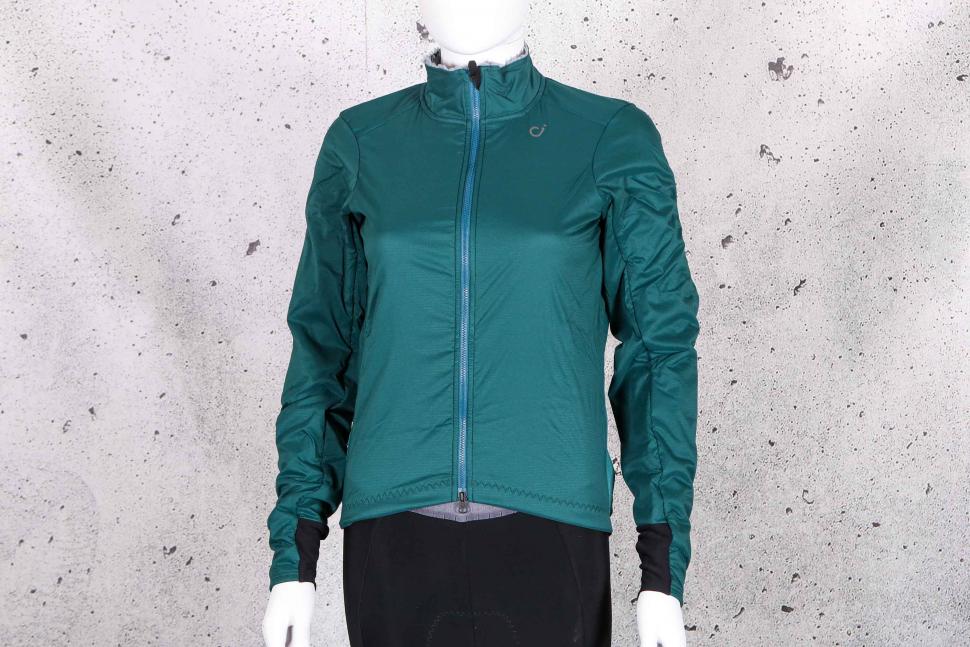
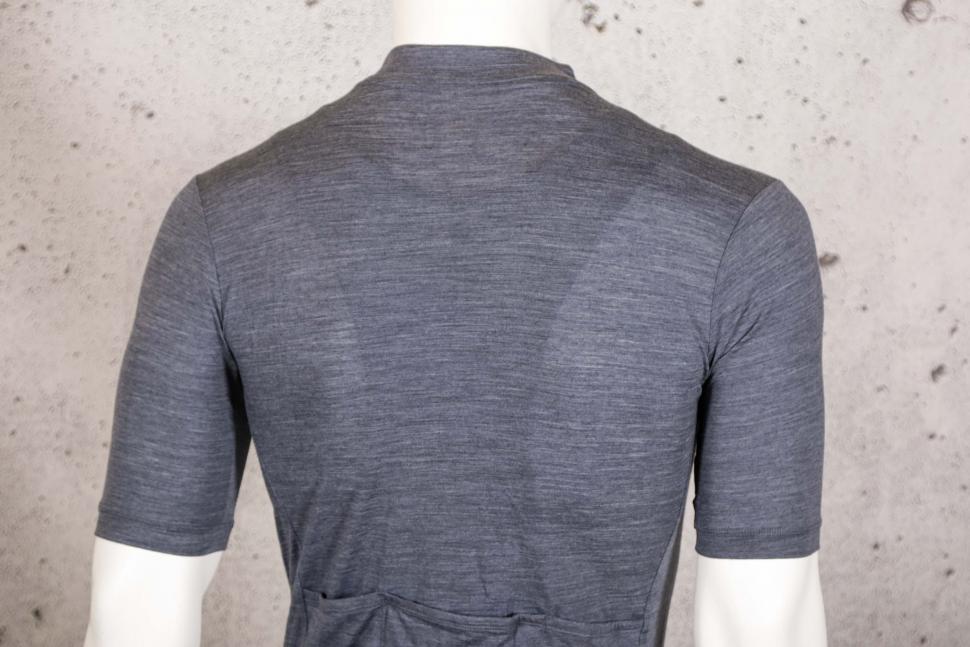
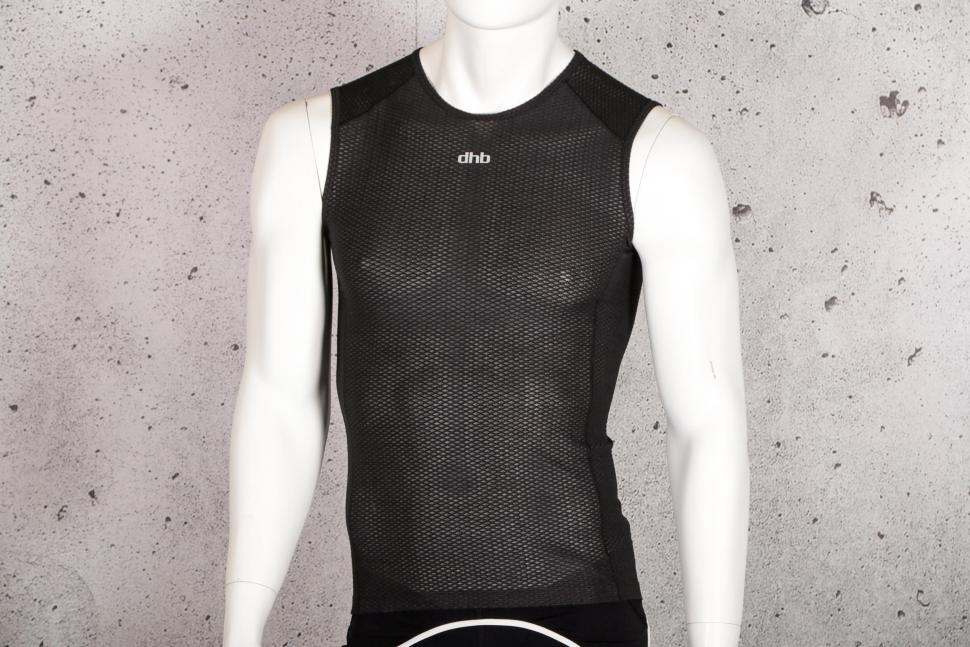
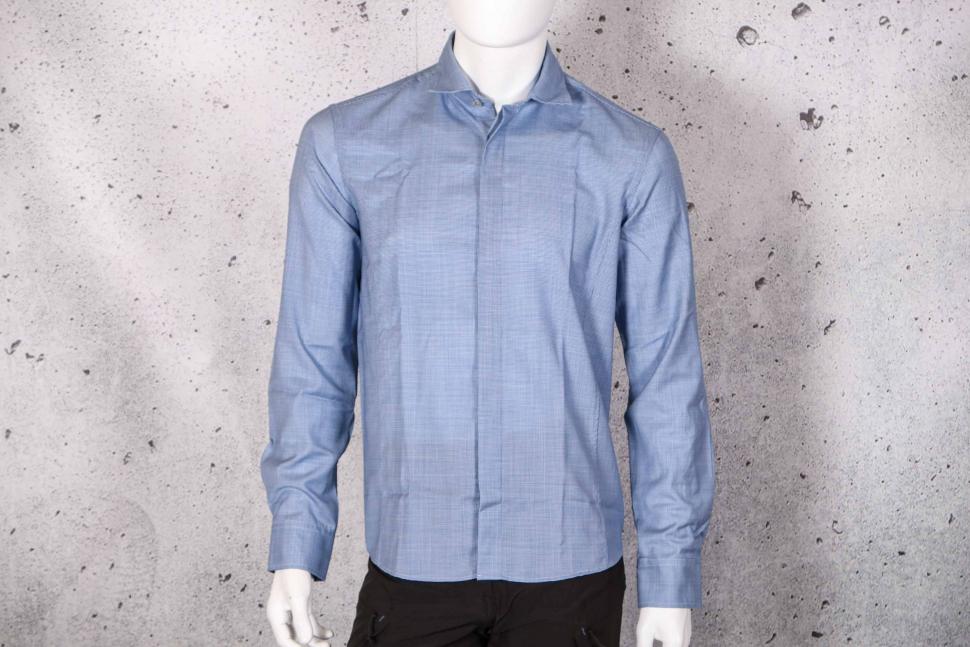

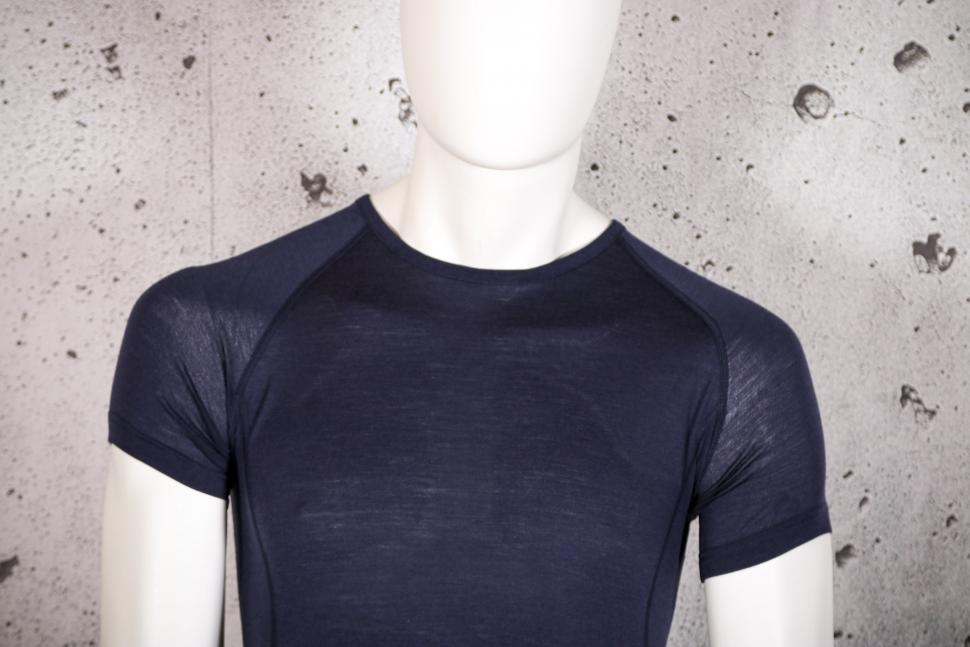
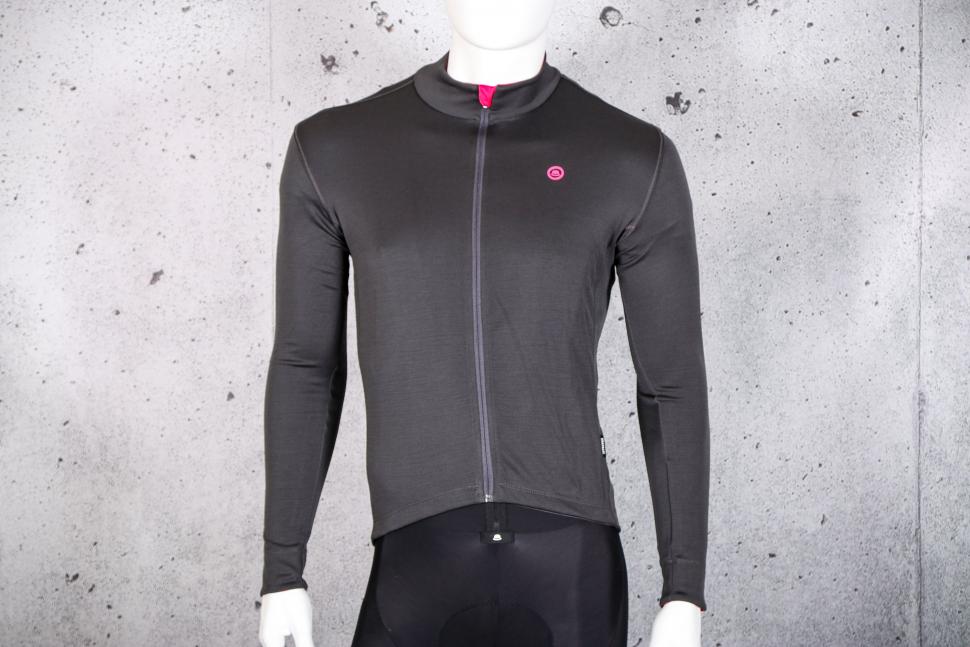

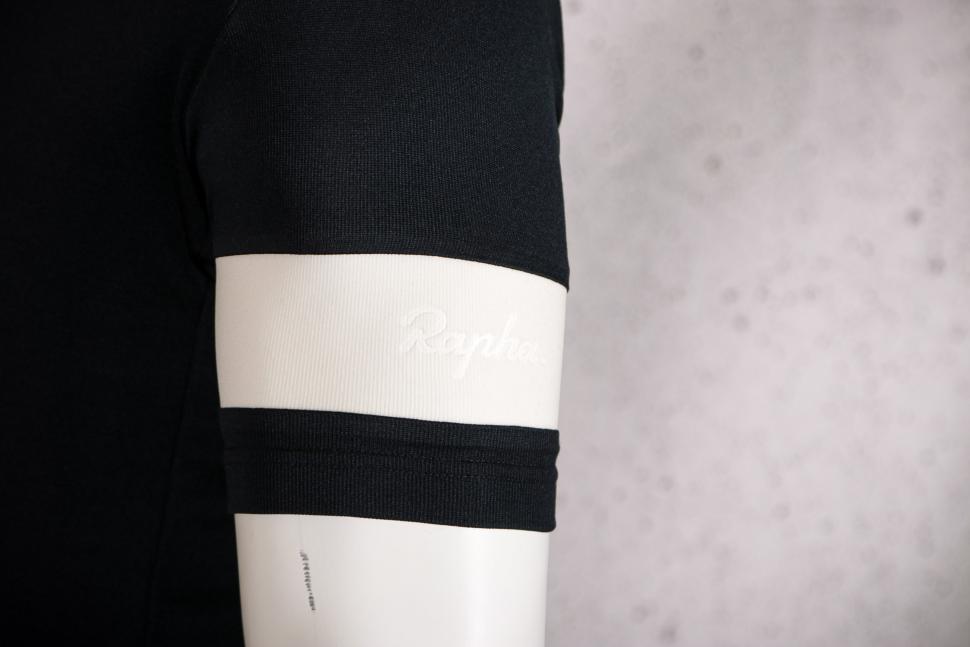

Add new comment
114 comments
At a fixed level of methane and CO2 the temperature of the planet will be X.
Methane is a far greater insulator than CO2.
If all else remains constant and we decrease the proportion of Methane and increase the proportion of CO2 the temperature of the planet will therefore fall to < X
That's not right, sadly. At a given level of greenhouse gas above a threshold, the sun warms the earth more than it will radiate heat away. Less gas just means that the rate of warming reduces. But that's a long way from the temperature actually falling because we are a long way from equilibrium.
Does the sun warm the planet indefinitely above this magical 'threshold'?
Obviously not.
The planet warms to a point and then reaches equilibrium.
Once you reach this equilibrium what happens if you reduce the level of greenhouse gases in the atmosphere?
My post is correct.
The problem being that we've not reached an equilibrium point. We've not yet felt the full effect of everything we've already chucked up there. Even if we paused atmospheric levels as they are now, the temperature would keep rising for the foreseeable. To stabilise at today's temperature we'd have to significantly reduce levels, and for it to actually start cooling we'd have to massively reduce them.
I haven't disputed any of that.
At present there are factors heating the earth and factors cooling the earth. The earth is warming.
Falling methane emissions from shrinking livestock herds are a factor that is cooling the earth relative to the point when the herds were at their largest.
At the current CO2 concentration, the temperature continues to rise because equilibrium has not yet been reached. You can lower the concentration of CO2 (though this is going to be difficult), but will achieve no cooling until a concentration below that current equilibrium is reached. That's the point.
This article is quite good on the topic (though covers quite a lot else): https://e360.yale.edu/features/how-the-world-passed-a-carbon-threshold-4.... I've not found a decent analysis of what the temperature would be if we flat lined emissions right now, perhaps because that's not a likely scenario to model.
I wouldn't bother if I were you Bill, I wish I hadn't been sucked in. Rich has never, ever, admitted to being mistaken about anything, he either ignores the facts, ridicules the source, or demands that you prove something else to which he's just switched tack. It's textbook sealioning: "A harassment tactic by which a participant in a debate or online discussion pesters the other participant with disingenuous questions under the guise of sincerity, hoping to erode the patience or goodwill of the target to the point where they appear unreasonable.”
It's hard not to want to push back against the air of patronising, smug superiority he exudes but I'm going to do my best in future, it's a total waste of time. There's only one person right in Richworld, and it's not going to be you.
Yeah I know this isn't an easy task, but I don't want to let that carbon neutrality idea go by without pointing out that it's a bit more complicated than that, to the extent that it becomes only a convenient fiction.
Translation:
Rendel gets argued into a corner, his argument in tatters.
He then skulks off, sniping insults from the sidelines and declaring he'll never engage again.
Next time I post anything up pops Rendel and we repeat the whole process once more.
It's tedious but it amuses me to take him down a peg or three.
QED. Classic sealion.
Feel free to never respond to a post of mine again.
It'll save me the time and you the embarrassment.
Clearly has a "Sealioning for Dummies" textbook to hand - straight out of the playbook. To be fair you're right, I do feel a bit embarrassed for wasting my time on you when I could have been doing better things; as Professor Dawkins said, don't bother arguing with an idiot, the best you can hope for is to say you won an argument with an idiot. Cheerio.
Bye bye Rendel.
Look forward to never hearing from you again.
You're completely ignoring what I actually wrote. Read my post again.
I agree that at present the Earth is warming.
Some factors are warming the earth, some are cooling it but the balance is currently in favour of warming.
If we look at methane emissions from livestock in isolation the effect of a reduction in herd size will be cooling.
Methane concentrations will fall leading to a reduction in temperature relative to when the herd was at its largest size.
I think actually you are mistaking changes in rate for changes in amount. Reduce the volume of greenhouse gases in the atmosphere and you will, all other things being equal, get a reduction in the rate of warming. Get a big enough reduction and you may find that cooling happens (as the planet radiates its own heat off into space).
Imagine a summer night and you have 17 blankets on your bed. You are too warm. Kick one off. You have 16. You are still too warm. It's not until you kick off almost all the blankets that you start to cool down.
You wrote: "Falling methane emissions from shrinking livestock herds are a factor that is cooling the earth relative to the point when the herds were at their largest." At what point was that? Since the dawn of civilization, have we been warmer due to reductions in livestock herds (if indeed there have been reductions in a world that's eating more meat and dairy than ever due to increased consumption in historically low consuming societies)?
I genuinely didn't expect you not to comprehend this. We disagree on some things but this isn't PhD level. M Thatcher got it and was quite eloquent on the topic as I recall.
Your blanket analogy is good but you've misinterpreted it.
If you have all the blankets on your temperature is X.
Remove one blanket and your temperature is < X.
You have cooled down.
Removing that one blanket cools you down.
You may still be too hot but you are cooler than you were.
A herd of livestock once established will only heat the world via methane emissions for 10-15 years.
After that there will be no further heating effect. The temperature will remain constant.
The blankets are all on and for every additional blanket added an exactly equivalent blanket is removed.
If you halve the size of the herd then the number of blankets will halve over the next 10-15 years.
You will be considerably cooler relative to when you had all the blankets on.
Herd sizes in western countries have been falling for decades. Google US/UK/NZ sheep herds for example.
You are neglecting the fact that your body is still radiating heat. All you've done is affect the rate of warming.
No. Once that methane has broken down, it no longer has an effect on the rate of warming. The 16 blankets are still too many.
Not if you still have 8. You are still confused about magnitude vs rate.
On your analysis, given that oil and coal are basically dead trees, is it ok to burn them as that's effectively carbon neutral? They took the CO2 in, so there's no problem in letting it out again as we're all square?
We seem to be arguing at cross purpose here.
Let's get back to absolute basics.
If you double the amount of methane in the atmosphere, then maintain it at that exact same level while everything else remains exactly constant how long does the planet continue to warm for?
Let's define that and then we can discuss the effect of changes in herd size etc.
Until we define the period of time to equilibrium the discussion can go nowhere.
Such a good question that you've asked it twice. What I can find is this: "At least 25% of today’s warming is driven by methane from human actions." from https://www.edf.org/climate/methane-crucial-opportunity-climate-fight#:~....
So a doubling of methane would make warming worse by a quarter. Good luck if you're happy with that.
Seeing as I have repeatedly given sources for my info where possible, could you find a reference for your stances that:
1) methane emissions are ok
2) any reduction from current levels of greenhouse gas emissions will result in global cooling
3) your notion of carbon neutrality stacks up
And as you have decided against arguing against my suggestion that
'On your analysis, given that oil and coal are basically dead trees, is it ok to burn them as that's effectively carbon neutral? They took the CO2 in, so there's no problem in letting it out again as we're all square?"
Would you be so kind as to acknowledge your agreement with it?
If you don't know how long it takes for the warming effect of methane to reach equilibrium then your objections to my previous comments are baseless.
You do not know how long the warming continues for after methane emission so your argument that a reduction in methane level merely slows the rate of warming due to methane is baseless.
I've already answered that question about fossil fuels elsewhere in the thread but, for your benefit, no I do not agree.
Burning fossil fuels will increase atmospheric CO2 and lead to climate change.
A livestock herd of fixed size will not increase atmospheric CO2. It will increase atmospheric methane for 12 years after it is established. After this there will be no further increases in atmospheric methane.
If you look at what I've actually written I did not say that there would be global cooling. I said that the reduction in methane levels would be a cooling factor. Global temperatures are, obviously, a result of myriad factors.
Carbon brief produced a good explainer of the current status of climate modeling.
"Methane has a short atmospheric lifetime, such that emissions released today will mostly disappear from the atmosphere after 12 years. This is the main reason why the world would cool notably by 2100 if all GHG emissions fell to zero. This would result in around 0.5C of cooling compared to a scenario where only CO2 falls to zero."
"If all human emissions that affect climate change fall to zero – including GHGs and aerosols – then the IPCC results suggest there would be a short-term 20-year bump in warming followed by a longer-term decline. This reflects the opposing impacts of warming as aerosols drop out of the atmosphere versus cooling from falling methane levels."
Falling methane levels produce a cooling effect. Just as I have been arguing.
https://www.carbonbrief.org/explainer-will-global-warming-stop-as-soon-a...
Except that's not what you said.
Even if you had said that, though, it still wouldn't be right. The reduced methane levels would still be a warming factor. What you would have achieved is to make the stack of warming factors outweigh the other factors that are cooling by a smaller amount, leading to a slower rate of warming.
Now you're just being dishonest.
Scroll down the thread and you will find multiple posts when I said exactly that
I've also been careful to state that the cooling would be relative to when the herd was at its largest size.
The carbon brief link confirms that falling methane levels will lead to a cooling effect.
Anything that adds fossil fuel derived co2 to the atmosphere will produce ongoing warming as the co2 concentration will continue to rise. Warming will continue indefinitely as long as co2 concentrations continue to rise.
A static level of methane does not produce ongoing warming. Equilibrium will be reached and warming will cease.
The bit I quoted was your original comment that all of this was responding to. Saying that referring to this is 'dishonest' is a bizarre claim.
Even in the bit you've quoted you say that the effect of a reduction in herd size will be cooling, and that there will be a reduction in temperature.
You seem, at heart, to be making a nonsensical claim. That if the current level of methane attributable to sheep herd is x, and we reduced it to y, then the absence of (x - y) methane would have a cooling effect. But an absence of something cannot have any effect. You might as well claim that an absence of unicorns is having a warming effect. What you've actually done is reduced the warming effect from that produced by x methane, to that produced by y methane. But it's still a warming effect.
It is dishonest if I've clarified multiple times since then what I was referring to and you cheerfully ignored all those posts and claimed I'd never said something which I demonstrably had.
In the bit I quoted I made it explicitly clear I was talking about methane emissions "in isolation".
I've given a credible link that backs this up. Falling methane levels will produce a cooling effect.
You may not be able to understand that but that doesn't make it incorrect.
They don't like it up 'em (as previous threads of hundreds of posts evince)!
Sounds like the point where everyone should put the keyboards down since we've got to "you wouldn't let it lie!" I've learned something along the way anyway. Personally I'll continue to wind and waterproof myself with
whale blubbersquirrel furleaves as I'm sure that in no way causes any ethical or ecological issues.Yep - I think this is the point to accept that meaningful discussion is no longer possible, so I'll walk away.
That point generally arises after a certain person has been here for more than three posts...
Me too. I thought I'd go and have a bath instead. As it was overflowing with the taps on full, I turned them down a tiny bit, but the flooding continued, albeit at a lesser rate. When my family came to ask me what I was doing, I dried it all up by turning just the hot tap off.
Actually it's probably worse than that. Firstly, we can't assume that the effect is linear - it may be more exponential.
Secondly, a doubling of atmospheric concentrations entails doubling the non-human-contributed portion as well.
Thirdly, warming is a function of netting the planet's ability to absorb energy against its ability to radiate it away. Some portion of current concentrations will go towards balancing that radiative effect, whereas the equivalent addition would go almost entirely to additional warming.
Pages